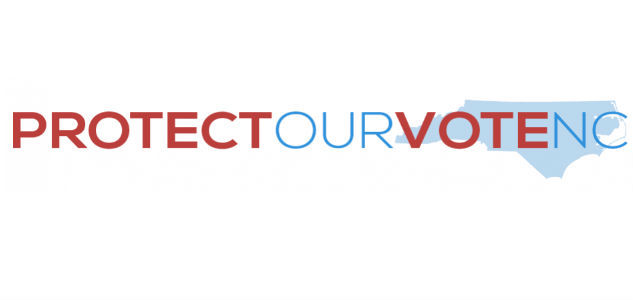
Responding to Paul R. Hollrah and making the point that almost anyone would find the national popular vote a good idea is author Rich Rubino in a column appearing in The New Media Journal on May 29. Freelance writer Paul R. Holllrah warns ‘Beware of the National Popular Vote’:
![]()
The National Popular Vote Plan is an interstate compact, whereby participating states agree to allocate their electoral votes to the winner of the National Popular Vote, as opposed to the candidate who secures the most votes in their state. The compact would take effect when enough states (constituting the requisite 270 electoral votes required to win the Presidential election) agree to participate. Currently eight states and the District of Columbia, constituting 132 Electoral votes, have ratified the compact.
Mr. Hollrah then asserts: ‘Any scheme for selecting a president and Vice President by national popular vote would clearly violate the intent of the Framers and may very well be unconstitutional.’ Contrary to Hollrah’s assertion, delegates to the Constitutional Convention of 1787 were deadlocked regarding how to select the President. One proposal had the U.S. Congress select the President.
Another proposal was to have the State Legislatures choosing the President. A third alternative was to conduct a direct popular vote. All proposals were rejected. Given this impasse, the conventioneers decided to delegate ‘plenary authority’ to the states to award their electors, as reflected in Article ll, Section 1, Clause 11 of the U.S. Constitution, which states: ‘Each State shall appoint, in such Manner as the Legislature thereof may direct, a Number of Electors.’ Accordingly, the intent of the Framers was for each state to have the autonomy to select electors in any way that it deems fit.
Moreover, the Plan is in fact constitutionally permissible. There is no provision in the U.S. Constitution mandating that the President must be selected by a particular electoral method. The winner-take-all-electoral voting system currently employed in 48 states was not in fact part of the grand design of the Founders. In 1789, the year of the first Presidential election, voters of only five states were permitted to mark ballots for Presidential electors.
The other states granted the power of voting for Presidential electors to their state legislatures. The winner-take-all approach of awarding electors was a scheme devised by partisan parochial interests to maximize their political advantage. States have the Constitutional authority to change their means of awarding electors. Massachusetts has done this 11 times. In fact, Maine and Nebraska changed from winner-take-all to the Congressional Allocation method.
Mr. Hollrah incorrectly couples supporters of the National Popular Vote Plan with Electoral College abolitionists. The Plan would not ’emasculate the Electoral College.’ Participating states would simply alter the way they award their Electoral Votes. The Electoral College will still exist under the Plan. On the Monday following the second Wednesday in December after the Presidential election is held, electors representing each state and the District of Columbia will still cast their Presidential ballots. On January 6, the Vice President will declare the winner to a joint session of the U.S. Congress. This is the process done now, and this is what will be done after the National Popular Vote Plan has been adopted by enough states to take effect.
Finally, Mr. Hollrah asserts that the National Popular Vote ‘is a liberal scam.’ While there are certainly liberal supporters, the Plan also enjoys the support of many contemporary conservatives. They include former Republican Presidential candidates Fred Thompson and Tom Tancredo, former U.S. Senator Jack Garn (R-UT), former Chairman of the Michigan Republican Party, Saul Anuzis, and Ray Hanes, the former Chairman of the American Legislative Exchange Council (ALEC.)
The left does not necessarily stand to gain if the National Popular Vote Plan is actuated. With some polls showing a dead heat between Barack Obama and Mitt Romney, but with Obama garnering leads in the preponderance of swing states, it is easy to envisage a scenario where Mr. Obama could win a second term without mustering the most votes.
The National Popular Vote Plan will simply ‘even the playing field. ‘ The President will be elected the same way as a Cemetery Commissioner, a Governor, or a U.S. Senator. It will obliterate the dynamic where candidates assiduously cultivate support from voters in only about 15 ‘showdown states’ while relegating the majority of Americans to the Electoral Sidelines.
Mr. Hollrah is a resident of Oklahoma. This is a state which has been ignored by Presidential nominees since 1976, and is becoming increasingly Republican at the Presidential level. It was John McCain’s best state in 2008. Barring an electoral cataclysm, the state will not be contested for many election cycles in the future. Only under the National Popular Vote Plan will Mr. Hollrah’s vote in Tulsa, OK be as sought after as a vote in Tulsa, OH. Under the winner-take-all system, Mr. Hollrah’s vote is futile. It is a forgone conclusion that Oklahoma will award all of its electoral votes to the Republican Presidential nominee.
Article Source: https://www.articlesbase.com/politics-articles/responding-to-paul-r-hollrah-on-the-national-popular-vote-plan-5947531.html
About the Author
Rich Rubino, of Marblehead, MA, is the author of the newly published book, The Political Bible of Little Known Facts in American Politics. He holds a B.A. in Communications (Media Track) and Political Science from Assumption College and an M.A. in Broadcast Journalism from Emerson College.
Leave a Reply